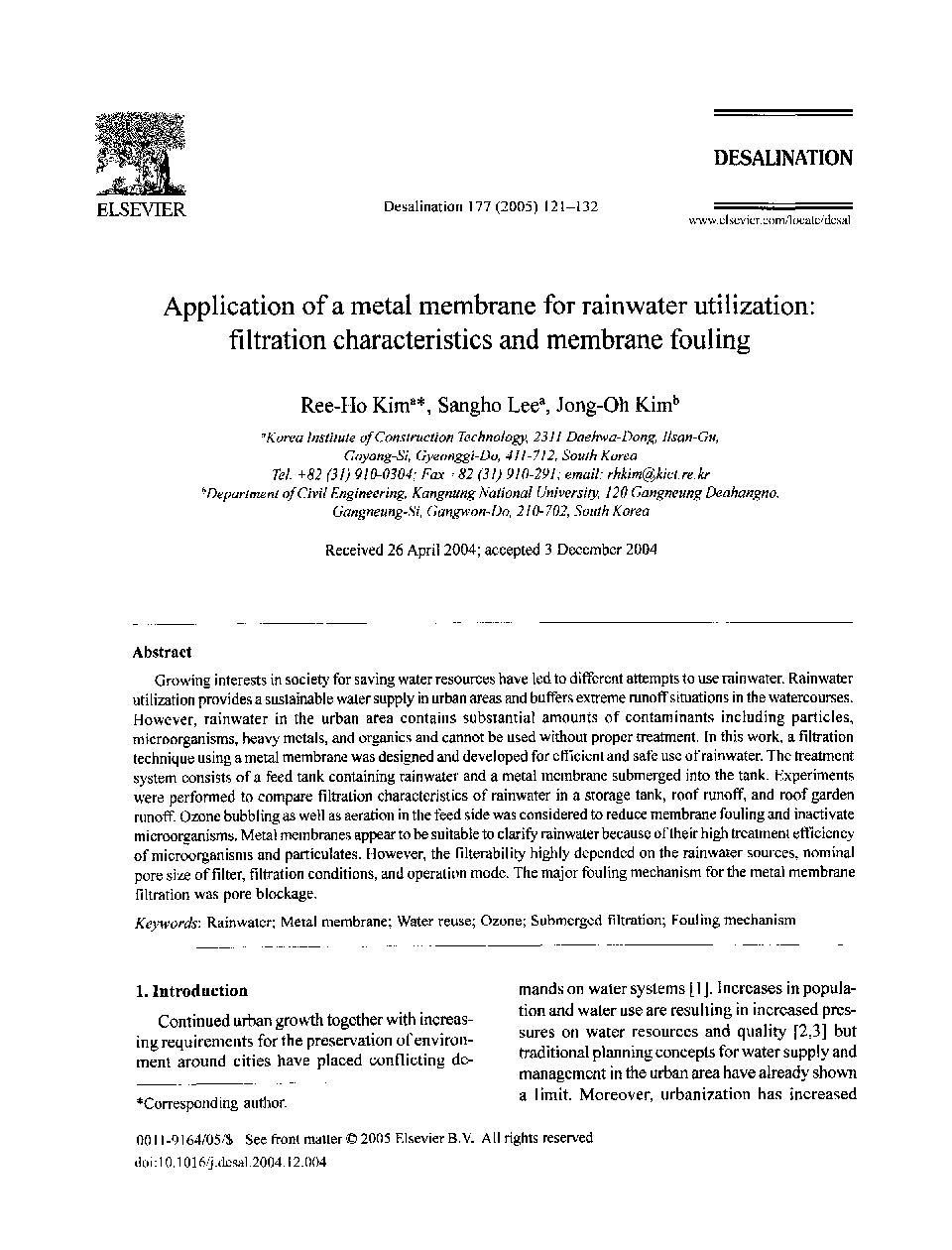| Article ID | Journal | Published Year | Pages | File Type |
|---|---|---|---|---|
| 9681176 | Desalination | 2005 | 12 Pages |
Abstract
Growing interests in society for saving water resources have led to different attempts to use rainwater. Rainwater utilization provides a sustainable water supply in urban areas and buffers extreme runoff situations in the watercourses. However, rainwater in the urban area contains substantial amounts of contaminants including particles, microorganisms, heavy metals, and organics and cannot be used without proper treatment. In this work, a filtration technique using a metal membrane was designed and developed for efficient and safe use of rainwater. The treatment system consists of a feed tank containing rainwater and a metal membrane submerged into the tank. Experiments were performed to compare filtration characteristics of rainwater in a storage tank, roof runoff, and roof garden runoff. Ozone bubbling as well as aeration in the feed side was considered to reduce membrane fouling and inactivate microorganisms. Metal membranes appear to be suitable to clarify rainwater because of their high treatment efficiency of microorganisms and particulates. However, the filterability highly depended on the rainwater sources, nominal pore size of filter, filtration conditions, and operation mode. The major fouling mechanism for the metal membrane filtration was pore blockage.
Related Topics
Physical Sciences and Engineering
Chemical Engineering
Filtration and Separation
Authors
Ree-Ho Kim, Sangho Lee, Jong-Oh Kim,
